Keeping your camera cool is an essential element to obtaining good clean images in astrophotography.
It’s summertime in the Northern Hemisphere and the news is dominated by stories of record heatwaves around the U.S. Hot weather isn't good for people (or most animals) and keeping cool can be a tough challenge. As it turns out, our astronomical cameras don’t take the heat well either. Keeping them cool is essential to obtaining good results with long-exposure, low-light imaging.
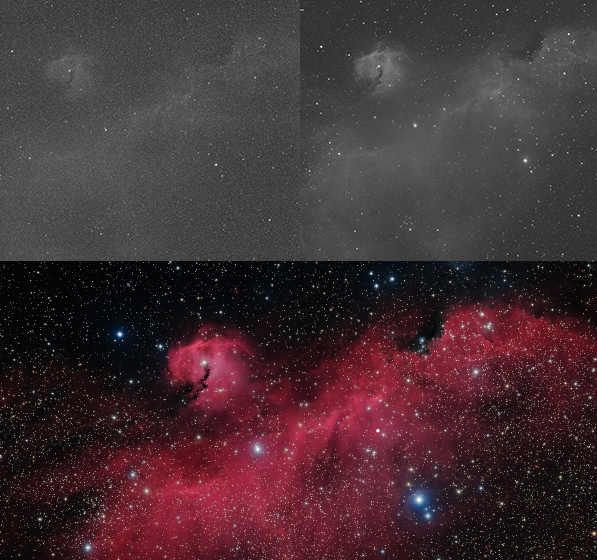
Richard S. Wright Jr.
Heat Brings Noise
Recently, we talked about how dark current (a form of noise) is related to temperature. A warm or hot image sensor will have a tremendous amount of dark-current signal offsetting your image pixel values. In addition, any signal your sensor records, be it light from your intended target or the signal generated by your image sensor's warmth, is going to contain shot noise.
A warm sensor can produce more dark current than the light we are trying to record. What's more, the associated shot noise will also be high, even higher than the shot noise from the faint target we are trying to record. It will take a tremendous amount of additional exposures to stack out dark current shot noise.
Nor can we simply remove it: Subtracting a master dark frame removes only the base dark current signal and pattern, but not all that shot noise accumulated during the exposure.
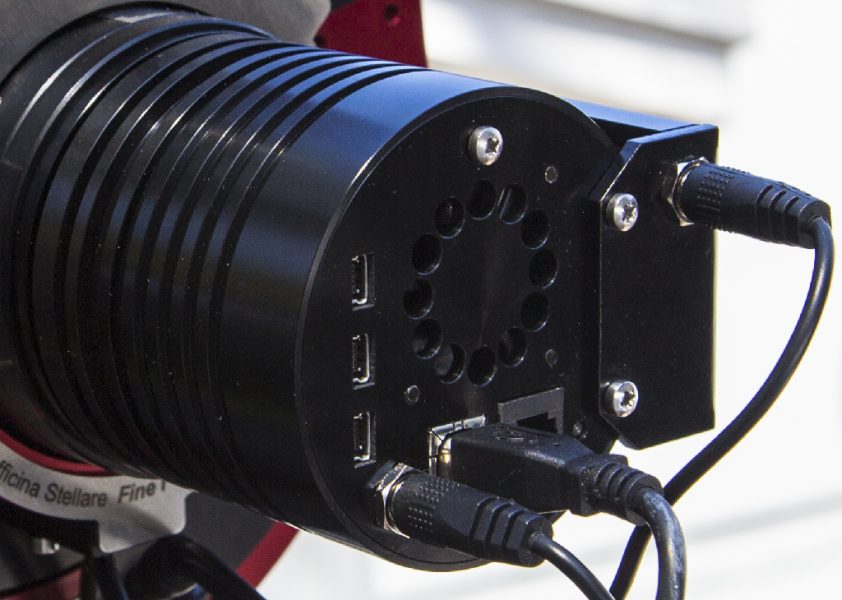
Richard S. Wright, Jr.
The best way of removing dark current shot noise is to reduce the dark current itself, which comes from the heat in your image sensor. Without intervention, image sensors will heat up as they are used. In fact, video cameras used for planetary imaging can become warm or even hot to the touch when used for long periods of time.
Cooling to the Rescue
There is hope, though. Most image sensors will drop dark current by about half (and dark current shot noise by about 5/7ths) for every 5° or so they are cooled.
Consider "Exhibit A" above. A few years back I was shooting with a CCD camera with the Kodak 8300 sensor. I forgot to turn on the camera's cooling and took my first 10-minute exposure. I was surprised by how noisy the image was and how difficult it was to see the nebula I was trying to capture. I then noticed the camera wasn't cooled. I immediately stopped the second exposure, turned on the camera's thermoelectric cooling, and waited for the camera to reach temperature (-20°C at the time) before restarting the exposure.
The first image was taken at an ambient temperature of about 80°F (25°C). You can see in the image that the uncooled camera produced a noisy result. (This was a narrowband hydrogen-alpha image, so the signal was already quite low compared to broadband imaging.) Dropping the sensor to -20°C reduced the dark current by half 9 times (every 5°). That’s 1/512 the amount of dark current, which works out to about 1/22 of the dark current shot noise! When it comes to dark-current noise, cooling is clearly a big win rather than trying to take enough exposures to stack out the noise!
There are some sensors on the market today (both CCD and CMOS) with low dark current, but they need to be cooled well below 0°C to fully reap this benefit. Some modern CMOS sensor electronics will drain off dark current as it accumulates, but alas, the shot noise is still there. (It's random, so you can’t just subtract it.) Even in this case, cooling still provides the biggest benefit for the low-signal areas in your image.
The Planetary Exception
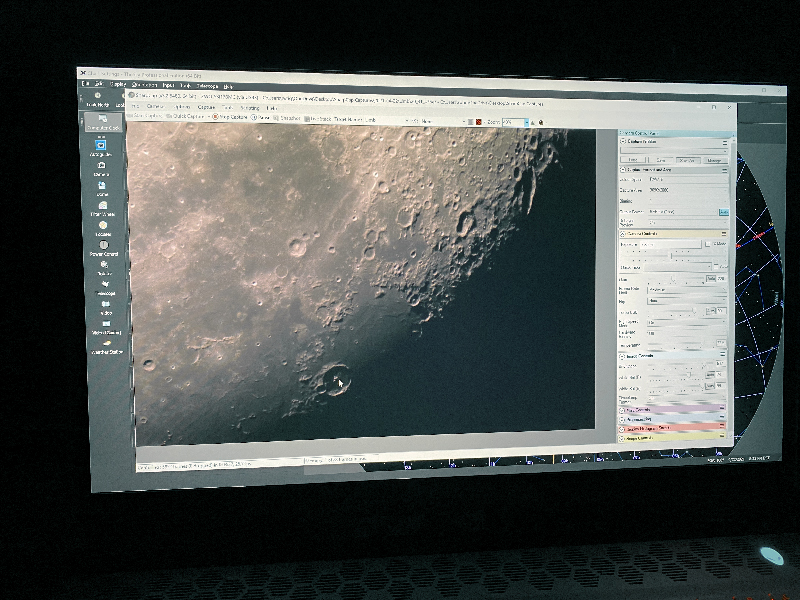
Richard S. Wright, Jr.
Cooling isn't always necessary. Planetary imagers shooting thousands of short-exposure video frames often neglect cooling for two reasons. One is that even though the sensors can become quite warm, the exposures are so short, that dark current (or its associated noise) doesn't have time to build up in each frame.
In addition, these imagers are often stacking hundreds if not thousands of images of an inherently bright target. This isn't practical for the larger sensors and much longer exposures we use for deep-sky imaging, but for planetary applications it’s no big deal. Still, cooled high-speed cameras do exist, and some planetary imagers prefer to use them when they can.
Cooled DSLRs
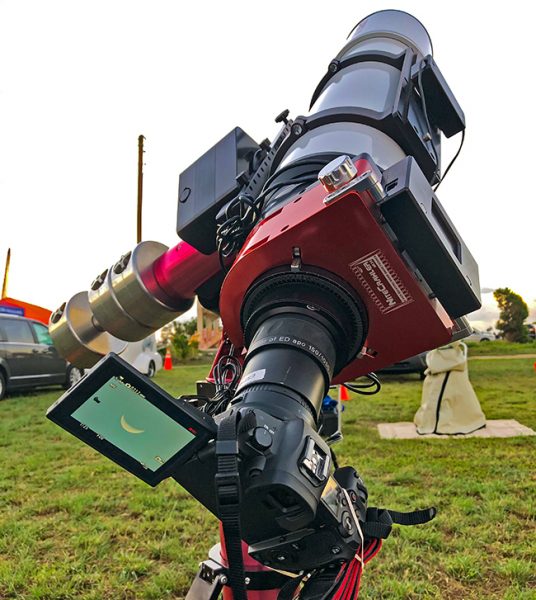
Richard S. Wright Jr.
Many imagers get their start by moving from nightscapes to putting a DSLR on the back of a telescope. The next step for many is to move on to a cooled, one-shot color camera. The primary advantage is regulated cooling — the temperature can be programmed and held constant. Nevertheless, many successful imagers stick with DSLRs for long-exposure work on the back of a telescope and many DSLRs are designed to reduce noise in ways that dedicated astronomy cameras are not.
Still, I’ve found they work best in cooler weather. Where I live in Florida, trying to use a DSLR on a telescope in the summertime is a complete waste of time due to the ambient heat. Even at night the temperature is often in the 80s or 90s. In fact, there is a whole cottage industry for DSLRs modified both for extended spectral sensitivity and cooling. Some enterprising imagers will even go to great lengths to build their own cooling boxes:
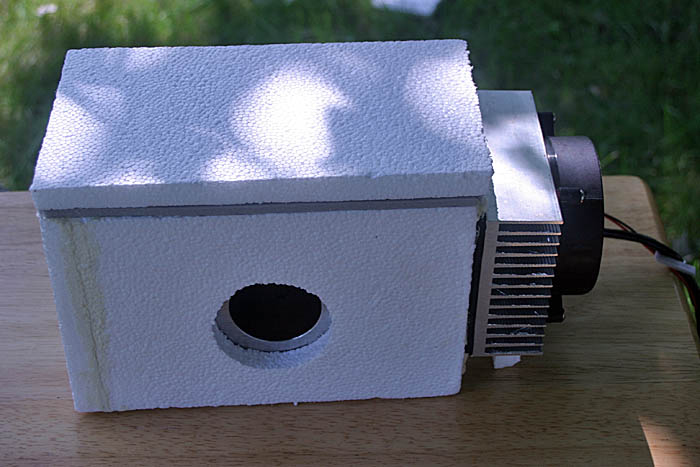
Gary Honis
Remember — to get a reduction by 1/2 of the signal shot noise you need 4× more exposure time. To get this reduction in dark current shot noise, you just need to cool your sensor by 10°. Even a little bit of cooling can make a very big difference.
 0
0









Comments
You must be logged in to post a comment.